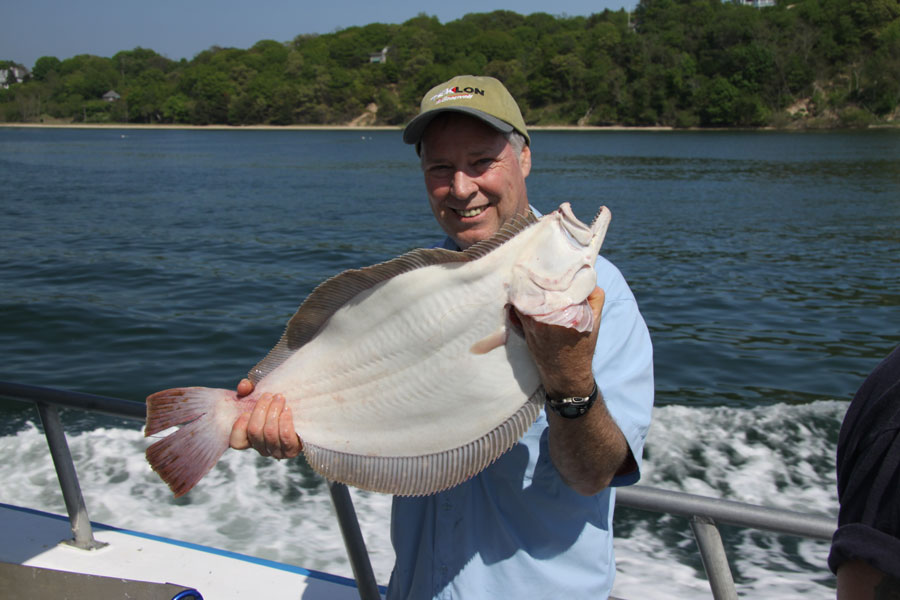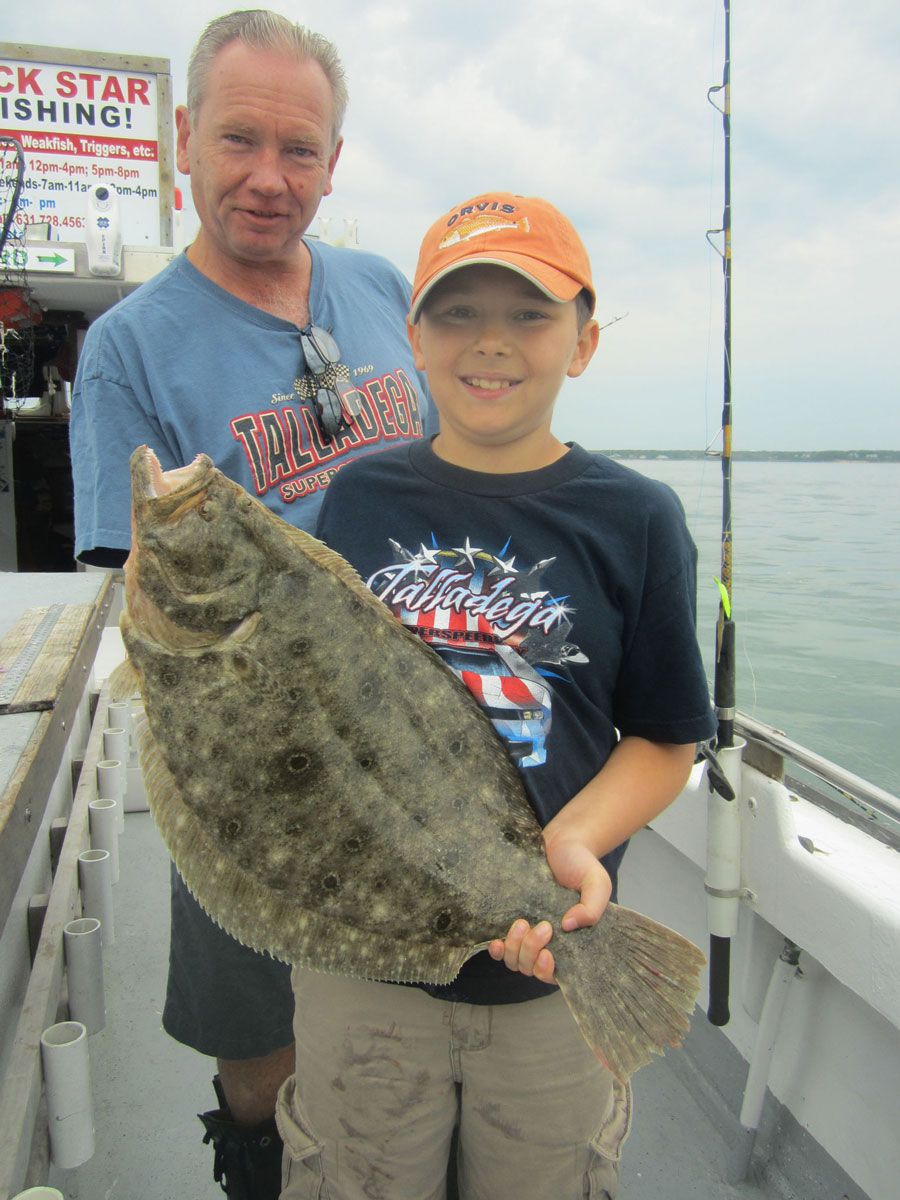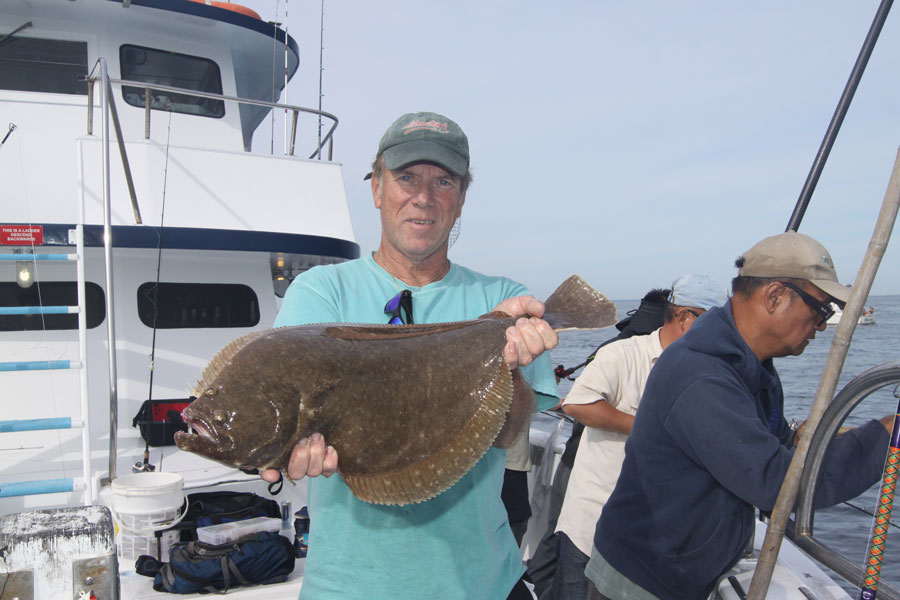
By Tom Schlichter
If you done much fluke fishing over the years, or simply follow the reports, you already know the primary fluke hot spots in most areas. How could you miss them this time of year anyway with the fleet all decked out and jockeying for position around each prized buoy, channel edge or inlet.
For those new to the summer flounder game, fishing within the fleet around other boats that are also targeting fluke is probably a good idea. Generally speaking, it puts you over the right kind of water and you can watch and learn as you see fish come up on other boats around your vessel. Once you have a feel for the right rigging, basic techniques and kind of water that produces, however, it’s often best head out on your own. That will get you a way from the competition, allow you to set up more specific drift patterns and challenge you to figure the fish out yourself.
Simply sliding down a primary channel a few hundred yards is often enough to make a difference when it comes to fishing inside bays and harbors. Heading for the next prominent point can be a good change if working the waters of Long Island Sound. If fishing out in the ocean, head offshore until you put another ten feet of water beneath your bow, or slide a little closer to the beach to see if the fish have moved in closer to shore. Any change is worth a try if you aren’t catching in the usual hot spots where everyone else is fishing.
Note, too, that if you headed out based on last week’s reports, the odds are the tide has flipped by now. When chasing reports, be sure to chase the proper tide as well, not just the location noted by the luckiest skippers.
As a rule, during May, June and early July you’ll find the best fluke action at the start of outgoing tides as warmer water from deep inside the bays is pulled out into the main channels, inlets and harbor mouths. During the heat of summer, cooler rising waters generally trigger the bite.

SHORT AND SWEET
Many fluke anglers I know love to drift long for fluke. If they pull up a keeper every now and then, they’ll basically stay the course. Once skipper last year, if fact, told of a great drift he experienced last year in the eastern reaches of Long Island Sound. “I picked a fish every 15 minutes or so,” he told me proudly, “and never had to kick over the engine. I’ll bet that drift lasted more than a mile!”
A mile? That’s probably three-quarters of a mile longer than I ever drift for fluke. Short and sweet is the rule when I’m at the helm. As a rule, the best action tends to be highly concentrated in a relatively narrow zone, often simply the stretch that lies between the buoys that mark channel edges. While it may be possible to drift and stay within a channel for quite some time if the wind is blowing in the same direction as the current, most days will see you crossing or quartering the channel. Under such conditions, you’ll need to keep your drifts relatively short to stay within the strike zone.
The same goes for fishing on flats, or out in the ocean. Most of the fish will be bunched up in a small stretch around favored structure, on slopes or simply sitting under schools of bait. Shorten up your drift to a couple-hundred yards at most and you’ll drop your baits in consistently productive water.
How short should your fluke drift run? It’s always Captain’s choice of course, but mine are often 200 yards or less. That’s the length of two football fields. I’d rather drop my bait in the hot spot over and over again than simply drag it along hoping to cross paths with scattered summer flatties.

TEASER AND BUCKTAIL COLORS
How do you know which teaser or bucktail color to use? That’s a tough one as fluke, like most other game fish, are capable of changing their minds not only from day to day but even from hour to hour.
I like white as a beginning choice since it routinely catches fluke in just about any water color, but chartreuse does seem to offer an edge in deep, stained or murky seas. Hot pink is another option, which seems to work especially well in the heat of late July and August at the point you begin to see baby calico crabs swimming around.. The point is that you don’t have to stick with one color all day long. If the tide changes and the water becomes murky or more clear, switch to a day-glo or florescent color like hot pink, chartreuse or bright orange. If fishing in clear water under sunny skies, try white, yellow or more natural-looking colors like olive, brown and green.
Keeping an eye on rigs of anglers who are having the most success is another way to determine which color teaser or bucktails are working best. If a particular angler with a different color teaser or bucktail is red hot, duplicating the productive rig or color scheme is probably a good idea. Don’t wait to make the switch when you recognize such patterns. Hop on it right away before the fish have chance to change their minds.
LET THEM EAT MEAT
Big fish like big baits, and the spring and early summer offers your best shot these days at hooking-up with a summer flattie of doormat proportions. While it’s tempting after a long, cold winter to just get the rod bending with bucktails and a light tackle approach inside the bays, inlets and harbors, they’ll be plenty of time for that come summer. For now, it’s a good idea to concentrate on catching that lunker of a lifetime for at no point this year will the odds be skewed more in your favor.

By the time June rolls around, there’s a good mix of fluke in the bays, Sound and inshore ocean waters so you’ve got plenty of options to choose from. With waters now right in the center of the summer flattie comfort zone, doormats and solid keepers often slide up into 10 to 40- foot waters within a mile or two of major inlets as the currents there stir up a mix of fodder including bunker, sand eels and spearing. They’ll also begin to settle in around structure as the squid move on from favored areas. By using a variety of strip baits cut from sea robin, bluefish, bunker or mackerel, you can target the biggest flatties in all three environments and possibly come away with legitimate doormat bragging rights.
By Tom Schlichter









